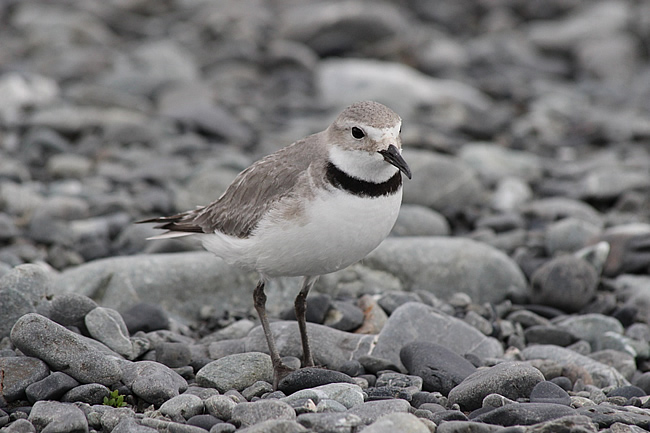Using unrewarding prey cues to reduce predation
New Zealand’s endemic fauna evolved in the presence of avian predators that hunt using sight. As a result, our fauna is visually cryptic but has few defences against introduced mammals that hunt primarily using smell. Olfactory predators are novel to New Zealand, creating a mismatch between visual defences and olfactory hunting strategies. The results have been devastating.
So, can anything be done about this mismatch? Fifty years ago Robert MacArthur, Eric Pianka and Merritt Emlen working in the USA introduced the notion that predators are constantly making foraging decisions to maximise their energy intake. Hunger forces them to focus only on rewarding cues and to ignore unprofitable cues that waste energy. Therefore, cryptic prey should be ignored if more easily detectable prey are available.
University of Sydney ecologists Catherine Price and Peter Banks tested whether this idea could be used to protect prey by deceiving predators into ignoring odour cues of visually cryptic species. They exploited the fact that mammalian predators hunt mostly at night, using their sense of smell. The researchers scattered bird faeces and feathers over 1 ha plots of Sydney bushland for 1 week before putting out quail eggs in artificial nests. They found that wild rats ‘habituated’, or lost interest in the odour of the faeces and feathers after only 3 days. Once habituated to the odour, rats were not interested in searching for nests even when they contained eggs. As a result, clutch survival increased by 62% over a short time period.
Grant Norbury and his team decided to test the method across a New Zealand landscape with real prey and multiple mammalian predator species. First, the team extracted odour from chicken, quail and black-backed gull feathers. The odour concentrate was mixed with Vaseline to enhance its longevity. They then ran laboratory and outdoor pen experiments with mice, ferrets and hedgehogs to confirm they lost interest in the bird odours after repeated exposures. Importantly, most animals appeared to ‘generalise’ between odour types, meaning that if they became habituated to one bird odour they became uninterested in odours from other bird species. This meant odour from widely available birds could induce lack of interest in bird odours in general, including vulnerable native species.

The team then embarked on an ambitious field experiment. They chose four study sites (mean size 960 ha) along 4–7 km lengths of braided riverbed in the Mackenzie basin, South Canterbury. The prey species were native shorebirds – mostly banded dotterels, but also wrybills and South Island pied oystercatchers. Their nests are highly vulnerable to a suite of introduced generalist predators (cats, ferrets, stoats, hedgehogs and rats), but these birds are secondary prey to other prey species (rabbits, in the case of cats, ferrets and stoats, and invertebrates in the case of hedgehogs and rats) – an important prerequisite, as predators do not rely on secondary prey for survival.
In 2016 the team applied bird odour at two of the sites for 5 weeks before the breeding birds arrived (i.e. the ‘priming’ phase), and for 12 weeks thereafter. Every 3 days a small amount of odour was applied to rocks at least 100 m apart at 300–400 randomised points across each site. Simulation modelling showed this deployment regime allowed predators to encounter the odour repeatedly (30–115 times per predator) during the priming phase. No odour was applied at the other two sites. Eighty motion-triggered cameras were used to monitor predator interactions with the bird odour on the treatment sites, and another group of cameras and tracking tunnels were used on all sites to estimate predator abundance.
Overall predator interactions with the odour were low (3.9 per 100 camera nights), but were nearly five times higher than where odour was absent, and some individuals were highly attracted to it. Low interaction rates were expected, as previous studies show only a minority of predators – called rogue animals – kill most native birds. Importantly, predators showed declining interest in the unrewarding bird odour as the priming phase progressed.
The ultimate measure of success, however, was whether the birds bred more successfully where the odour was applied. Wildlife Management International Limited ornithologist Nikki McArthur and four colleagues monitored the outcomes of 470 clutches (81% from banded dotterels) across the four sites for two breeding seasons. Cameras confirmed which predators were responsible for failed nests, with two-thirds predated by hedgehogs. The 2016 results were encouraging, but Grant knew from past studies that hatching success is variable in time and space. Therefore, in 2017 the team swapped the treatment and control sites, and found that the results swapped over as well, confirming the positive treatment effects.
So, what happened? Hatching success rates, combined for both years, were significantly higher on treatment sites, but only for the first month or so (Figure). This waning was expected as predators eventually found food rewards associated with real nests. For banded dotterels and wrybill, hatching success was, on average, 37–104% higher on the treatment sites over the first 25 days. For pied oystercatchers, hatching success was 71% higher overall on the treatment sites over the first 32 days.
These results show that this new technique can boost chick production by about 40–100% during a 25–32 day ‘window of opportunity’ without removing a single predator. This result is further boosted by the fact that, without any intervention, survival of chicks born early in the season is typically significantly higher than for those born later (Aalbert Rebergen, unpublished data). Therefore, protection of early clutches results in more chicks fledging than protection of late clutches. Importantly, this technique is likely to target those predators that inflict the most damage on prey populations but may evade control programmes.

The team was now confident the method had merit as a management tool for reducing the predation of native species. So where to next? The long-term aim of the project is to identify the components of bird odour that predators respond to, and synthesise them in the lab. Grant would also like to explore the use of drones for deploying odour more cost-effectively in large, open habitats. Finally, the same principle of unrewarding cues could be applied to other types of cues, such as sound. The begging calls of chicks, for example, attract stoats. It may be possible to deploy recordings of begging chicks before nesting begins to habituate stoats to this cue, thereby providing a period of greater chick survival. These are research topics for the future.

The obvious question people might ask is how this method is any better than existing lethal control methods? The answer is that lethal methods cannot always be applied everywhere, especially overseas where problem predators might be native and protected. Also, it is common sense for New Zealand to develop an array of methods to protect vulnerable wildlife, because (1) predators soon learn to avoid single methods that are repeated over and over, and (2) different methods suit different circumstances. For example, the unrewarding cue method could be applied during vulnerable periods, such as breeding seasons or during translocations. Also, areas that are prone to rapid re-invasion by predators are more suited to the method described here because it does not involve removing animals.
The project was funded by a Ministry of Business, Innovation and Employment’s Smart Ideas grant, and the Strategic Science Investment Fund.
Grant Norbury
norburyg@landcareresearch.co.nz
